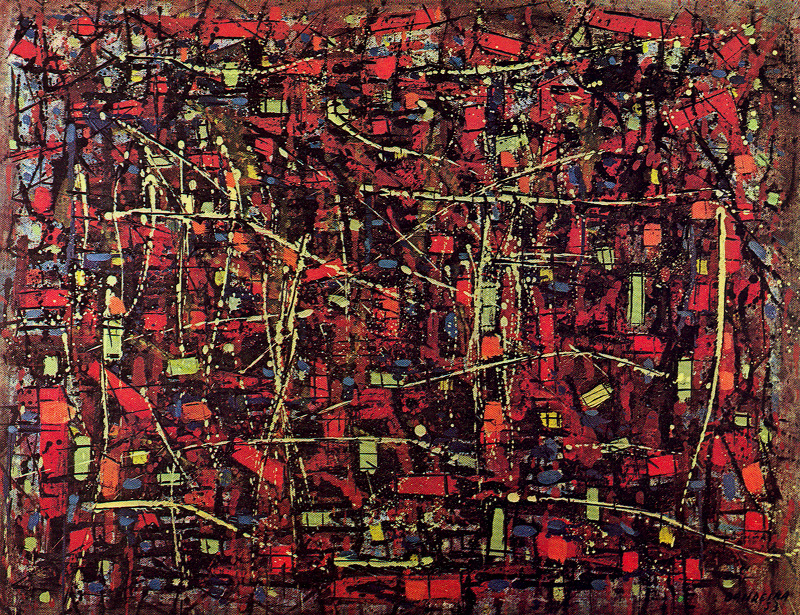Source: Museu Nacional de Belas Artes, Rio de Janeiro, Brazil. Colorama Editora Artes Gráficas Limitada, n.d., p. 173.
Painting: Antônio Bandeira (1922-1967), "A grande cidade iluminada" (The great illuminated city, 1953).
Comment: In 1946, Bandeira studied art in Paris. When he returned to Brazil in 1950, he worked within the Brazilian modernista movement, but he was one of the first Brazilian artists to be attracted to abstract art, as you see in the above example. He advocated what he called "painting-painting", which he opposed to the Concretists. In 1969, he made the following statement about his art:
Não mostro paisagens do Sena, nem alguns dos vários monumentos. Para isso tomen um táxi e vão ver de parto. Mostro porém um cuspo na água, um copo de vinho, uma folha caindo, casas brancas e cinzas, coloridas, recordações de noites vividas ou pensadas, e de vez em quando uma suadadezinha que boto nas cores. O importante é continuar fazendo pintura, polindo-a, procurando me encontrar com ela, a fim de fazer qualquer coisa de sério e útil.
[I do not paint scenes of the Seine River, nor some of the many monuments. For that take a taxi and you will see them up close. I depict, nevertheless, a puddle of water, a glass of wine, a leaf falling, white, gray, and red houses, memories of nights lived or imagined, and, from time to time a sad little emotion I evoke with color. The important thing for me is to continue doing painting, polishing it, trying to encounter it, in order to do whatever is serious or useful.]
Humanities question: In what way does the painting shown above achieve the fusion of reality and imagination?


